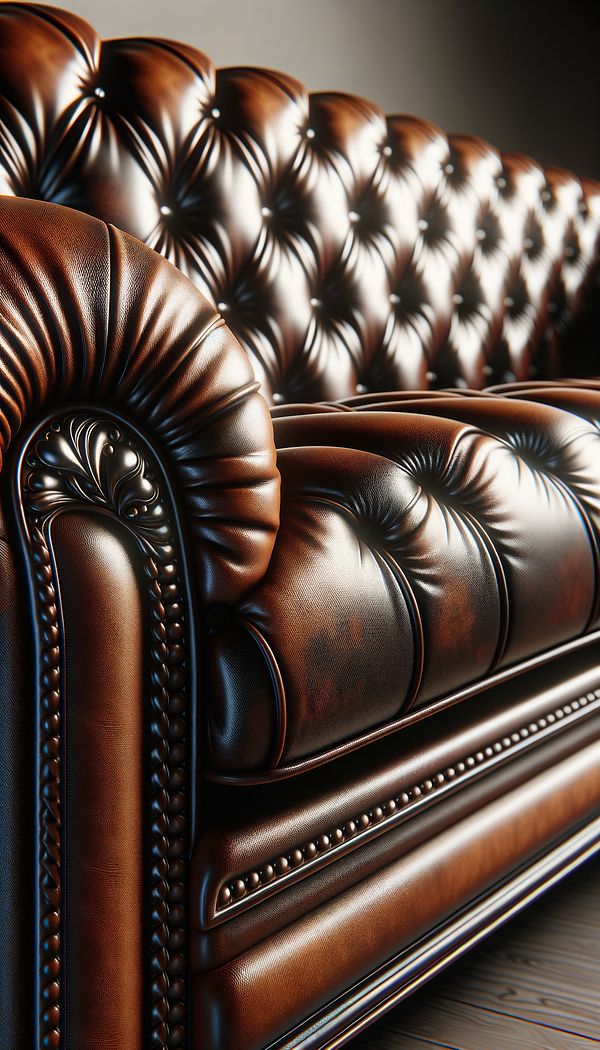What is Leather Finishing?
Leather finishing refers to the processes applied to the surface of the leather to enhance its appearance, feel, durability, and resistance to external factors.
Description
Leather finishing is an essential process in the production of leather goods, particularly in the context of interior design where leather is a popular choice for furniture, wall treatments, and other decorative items. This finishing process involves several steps aimed at refining the raw leather's natural appearance and optimizing its characteristics for various applications. The main purpose of leather finishing is to provide added protection to the leather, improve its aesthetic appeal, and ensure its suitability for different environmental conditions.
The finishing techniques can include dyeing, coating, embossing, and polishing, among others. Each technique offers a unique texture, color, and feel to the leather, paving the way for a multitude of design possibilities. Dyeing allows for a wide range of colors to suit various interior design themes, while coating can provide additional durability or a specific sheen. Embossing and polishing can enhance the leather's visual texture and touch, respectively.
The quality and type of finishing can significantly impact the leather's maintenance requirements and longevity. High-quality finishes not only make the leather more resilient to wear and tear but also easier to clean and maintain. As such, when selecting leather furnishings or accessories for interior design projects, understanding the specifics of the leather’s finish is crucial.
Usage
In interior design, leather finishing is commonly seen in the application of various finishes to leather sofas, chairs, and ottomans to achieve desired color schemes or textures. It can also be found in the use of leather panels for wall treatments or desktops, where specific finishes are used to create a luxurious, sophisticated look.
FAQs
-
What is the purpose of leather finishing?
The purpose of leather finishing is to enhance the natural appearance of the leather, provide added protection, improve surface durability, and ensure the leather’s suitability for various environmental conditions and usage scenarios.
-
Can leather finishing change the color of the leather?
Yes, dyeing is a common finishing technique that can significantly change the leather’s color, offering a wide range of hues to fit different interior design themes.
-
Does leather finishing affect the maintenance requirements of the leather?
Yes, the quality and type of finishing can affect the leather’s maintenance requirements. Better-quality finishes generally make the leather easier to clean and maintain, while also making it more resilient to wear and tear.
Practical Application
When selecting leather goods for interior design projects, it's important to consider the type of finish used on the leather. This not only determines the aesthetic quality and durability of the piece but also its maintenance needs. For instance, choosing a leather sofa with a high-quality protective coating can ensure it remains in pristine condition for longer, even in high-traffic areas. Additionally, understanding different finishing techniques can help designers achieve a specific look or feel, whether it’s a glossy sheen, a soft matte texture, or a unique embossed pattern.
-
Furniture Types599 articles
-
Decorative Techniques322 articles
-
Materials & Textiles360 articles
-
Textiles & Upholstery252 articles
-
Beveled EdgeA beveled edge refers to an edge of a structure that is not perpendicular to the faces of the piece.
-
Arm ChairAn arm chair is a chair with supports on the sides for resting your arms.
-
Center RailA center rail is a horizontal support element found within a piece of furniture or an architectural structure.
-
Spiral TurningSpiral Turning is a decorative woodworking technique that creates twisted patterns along the length of a piece of wood.
-
SegmentalSegmental refers to parts or segments of a whole, often relating to design elements divided into sections.
